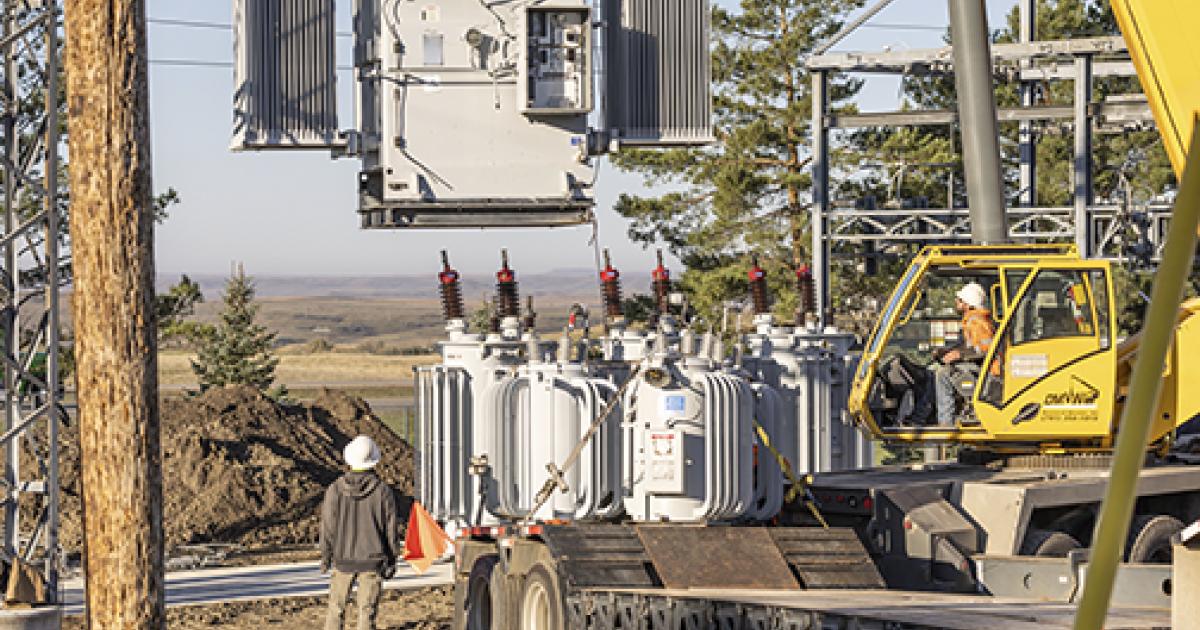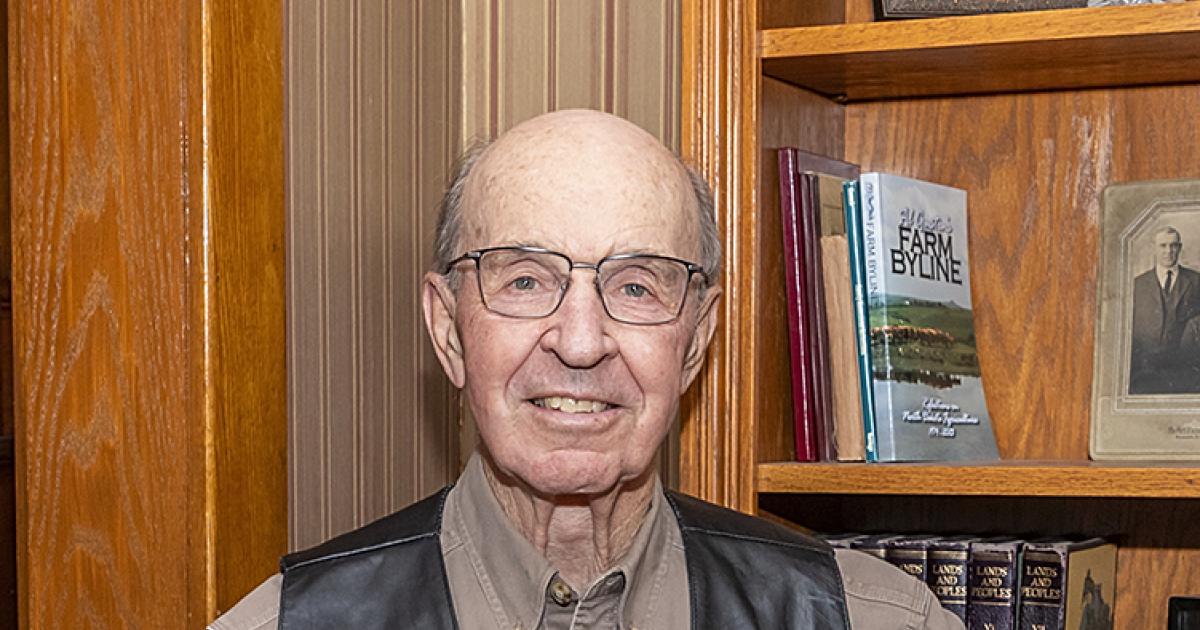A three-phase transformer is lowered onto its new substation training site. Photo by NDAREC/John Kary
A decommissioned substation that sat powerless for nearly a year is no longer out of commission.
Central Power Electric Cooperative, a Minot-based generation and transmission cooperative, has disassembled its retired Garrison area substation and moved it 75 miles south to the Lineworker Training Center in Mandan, where it will be used as a training tool. The donated substation is a critical foundational piece of training equipment, which will allow for the development of a training program specifically for substation technicians.
This type of training does not currently exist in the state.
“North Dakota’s electric cooperatives have a long history of working together to provide crucial training for the electric cooperative workforce, having founded the country’s first lineworker training school in partnership with Bismarck State College (BSC) in 1970,” says Josh Kramer, executive vice president and general manager of the North Dakota Association of Rural Electric Cooperatives (NDAREC). “As the number of substations in the state continues to grow, the demand for substation and relay technicians is on the rise.”
Substation technicians in North Dakota are typically electricians and lineworkers who have acquired their skills primarily through on-the-job learning, working on energized substations.
For the first time, trainees will be able to work on non-energized substation equipment in a safe environment. NDAREC plans to incorporate substation training into its robust apprenticeship, training and safety (AT&S) program. The AT&S program equips the electric cooperative workforce with the training, skills and safety practices necessary to build and maintain co-ops’ complex electric systems.

While the substation facility will not be energized, and no insulating mineral oil will be pumped into transformers for cooling, heat exchange or insulation, a three-phase transformer and three single-phase transformers have been added to the training site.
“This will allow for training opportunities on various transformer designs, reinforcing trainees’ familiarity with connections they are likely to encounter on the job,” says Mark Sherman, Central Power’s manager of engineering and operations. “This substation will help introduce trainees to components typically used in distribution substations and will hopefully help young line technicians be more comfortable within distribution substations.”
“Having a substation for training purposes provides a level of safety and helps to build workers’ confidence as they learn the skills of the trade,” Kramer adds.
Rainbow Energy paid for the substation’s new concrete foundations at the Lineworker Training Center, and Central Power crews worked in September and October to transport and reassemble the distribution substation.
“Central Power’s board of directors recognizes the value in training employees,” Sherman says. “This substation will allow trainees to go beyond the textbook and gain invaluable hands-on experience, preparing them for careers at electric cooperatives.”
“It’s incredibly generous of Central Power and will create a huge hands-on (learning) opportunity for our workforce and our future employees,” says Mark Doyle, general manager of McLean Electric Cooperative. The decommissioned substation had served the cooperative’s members in the Garrison area since it was built in 1978. A new substation, built 2 miles from the decommissioned substation site, is connected to a higher voltage transmission line and now serves McLean Electric’s members.
The donation also supports long-range expansion goals of BSC, which hopes to add both substation and relay technician training to its curriculum.
A future goal is to secure funding to install a Timpson training unit, which would energize lines and the substation to safe, non-lethal levels for training.
As more segments of the American economy and people require more electricity to power their lives, businesses and communities, trained substation technicians will be needed even more in the future.
“The demand for electricity in North Dakota has grown significantly over the past several years and we see that trend continuing,” Kramer says. “One way electric cooperatives are planning for the future is by investing in a trained workforce, which is essential to maintaining electric service and reliability.”
__
Cally Peterson is editor of North Dakota Living. She can be reached at cpeterson@ndarec.com.










